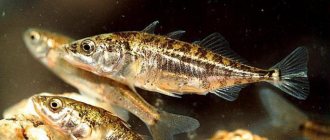The dolphin is an agile and dexterous predator, a social animal that lives in all seas, rises high along rivers, feeds on fish, mollusks, and crustaceans. Dolphins are distinguished by their curiosity and good attitude towards people. Dolphins swim very quickly, and schools of them often accompany ships. Since ancient times, the dolphin has become a beloved and popular animal: legends, poems and stories have been written about it, and sculptures have been made. The term "dolphin" is of Greek origin and goes back to the words "womb" and "womb". It is suggested that it can be interpreted as “newborn” (due to its external resemblance to babies or the similarity of the cries of dolphins and children).
Description of the dolphin
All species of dolphins have a naked, streamlined body, flexible and muscular, with highly modified limbs-fins, a small head with a sharp snout and a dorsal fin.
The head is distinguished by a pronounced transition between the forehead and nose. The eyes are small, vision is poor. There are no tactile vibrissae or sense of smell. The dolphin's nostrils are a single breathing hole located on the crown of the head, which allows the animal to breathe even when almost completely submerged under water. The dolphin doesn't even have ears. The animal's hearing is provided by the inner ear and the air cushion in the frontal lobes. The dolphin's echolocation is perfect. It picks up reflected sound waves and determines the location of environmental objects, the distance to them and their nature (density, structure, materials). That is, in fact, the dolphin sees the world through sounds. The dolphin itself makes sounds: crackling, clicking, clicking, chirping. All these sounds are varied and complex and are used for communication. The dolphin has 40-60 teeth, small and uniform. — Advertising —
The dolphin's body is naked, the structure of the skin reduces water friction and improves hydrodynamic qualities. Due to the mobility of the animal, the outer layer of skin wears out quickly: on average, 25 cellular layers of skin are replaced during the day. There are two color options for dolphins: plain (gray, black, pink) and contrasting, black and white.
Dolphin feeding habits
The dolphin's diet consists only of fish, small and medium-sized (anchovies, sardines). The dolphin has a unique fishing technique. First, the herd explores the water using echolocation; if a school is detected, the dolphins approach it, making sounds at a special frequency that causes panic in the fish. The fish, in turn, cluster together, thanks to which the dolphins catch them with their joint efforts. At the same time, they exhale air, creating a kind of barrier around the fish, and catch the majority of the school. Interestingly, seagulls and gannets track the behavior of dolphins from the air and join their meals.
Where does the bottlenose dolphin live?
Photo: Black Sea bottlenose dolphin
Bottlenose dolphins are found in almost all warm waters of the world's oceans, as well as in temperate ones. In Atlantic waters they are distributed from the southern borders of Greenland to Uruguay and South Africa. In the local seas: the Black, Baltic, Caribbean and Mediterranean, dolphins are also found in abundance.
They cover the Indian Ocean starting from the northernmost, including the Red Sea, then their range extends south all the way to South Australia. Their population occupies the Pacific Ocean from Japan to Argentina, while capturing the state of Oregon all the way to Tasmania.
Dolphin distribution
The habitat of dolphins is quite wide, including almost the entire planet. They are not found only in the cold waters of the Arctic and Antarctic. Dolphins mainly inhabit seas and oceans, some species inhabit large rivers. Dolphins prefer open spaces, move freely through the oceans and can come close to the shores.
Common Dolphin Species
- Common dolphin (Delphinus delphis L.) - the upper body and fins are grayish or greenish-black, the belly is white, the skin is smooth and shiny. The body length is about 2 m, the dorsal fin is 80 cm high, the width of the pectoral fins is 15-18 cm, the length is 55-60 cm. It lives in the seas of the northern hemisphere, living in schools of 10, 100 and up to 1000 individuals.
- Bottlenose dolphins (Tursiops truncatus) are a famous and popular species of dolphin that lives all over the globe. The body is dark, gray or brown above, lighter below. In length from 2 to 4 m, weighs 100-300 kg.
— Advertising —
Dolphin behavior
Dolphins are highly developed social animals. They are distinguished by a friendly disposition, peaceful relations in packs where fights do not occur and there is no fierce competition. The flock is led by an experienced leader. Dolphins communicate with each other using a diverse range of sounds; each member of the pod has its own individual voice. Dolphins have different signals to warn of danger, the presence of food, or express a desire to play. From simple sounds, a dolphin is able to compose complex, and even an entire sentence, which is very reminiscent of speech. Dolphins are recognized as highly developed animals, and their intelligence is equal to that of apes.
What are the strengths and weaknesses of opponents?
Behavior and way of life
How do dolphins manage to not only stop the attack, but also destroy the enemy? The reality is that the storm of the seas, like all living things, has its weaknesses, and dolphins are not nearly as harmless as they seem.
Sharks are experienced and cautious hunters, but prefer a solitary lifestyle. They gather in flocks extremely rarely, as a rule, during the mating season. Then they scatter, each in search of their prey.
Dolphins are social animals, they live in pack families, care for and protect each other, helping and supporting the weaker. They also hunt and defend together. In a battle with a shark, their quantitative advantage plays an important role.
Battle tactics
A shark almost always attacks according to the same scenario: it begins to cut circles around the potential victim, gradually approaching it.
When defending, dolphins act harmoniously and together, using various tactics in the fight:
- Gaining speed, dolphins rise sharply vertically from below and constantly ram the predator’s belly - one of the weakest points of a shark. Damage to internal organs makes the enemy practically unviable.
- According to researchers, most often dolphins push and hit it with their beaks with tremendous force and speed, certainly aiming for the gill slits, the most vulnerable place. This impact is akin to a blow to the solar plexus in a person.
- With their powerful blows, dolphins damage the shark's eyes, break its fins, and may well break the fish's backbone.
- Killer whales, for example, can put an enemy into a state of tonic immobility: they strike the shark’s sides with their snout, causing a prolonged muscle spasm. The paralyzed woman is turned belly up and finished off.
- There are also observations that dolphins pushed the predator into the air and kept it in this position until it died from lack of oxygen.
It’s not often that a shark manages to survive such fights. Even if she manages to avoid death in battle, wounded, she will become a victim of her own relatives.
The power of intelligence
The weakness of sharks is their lower stage of development and solitary lifestyle. A shark is a fish, belongs to the order of chordates, is guided by instincts and reflexes.
Dolphins are highly intelligent marine mammals. Their main weapon is intelligence. It is thanks to their intelligence that they choose the weaknesses of the enemy and understand the effectiveness of the collective way of life and defense.
They are able to accumulate experience and pass it on from generation to generation. In fact, some scientists and animal rights activists are so confident in dolphins' exceptional intelligence and consciousness that they propose calling them "non-human individuals."
There are many known cases of dolphins saving people. There is at least one documented case where they saved swimmers from a white shark. The cetaceans surrounded the people in a tight ring and did not let them out for about an hour until the whole group landed on the shore.
The man, who had previously managed to escape from this caring environment, discovered a white shark nearby, ready to attack.
Dolphin breeding
Dolphins reproduce throughout the year. They do not have any special mating rituals; the leading male mates with the female while moving, and even the birth of a baby occurs “on the move.” The baby is born tail first and is immediately able to independently swim behind its mother to the surface for its first breath. His mother helps him by pushing his nose up. At first, the baby is fed with mother's milk, but quickly enough switches to adult food and an adult lifestyle.
Hunting method
Sharks serve as aquatic orderlies. Predators wait until the weakened individual breaks away from the pack. After the animal separates from the main group, the hungry fish attacks. This behavior is due to the high calorie content of mammalian meat. If the rest of the dolphins have swam a long distance, then the shark kills the victim and satisfies the need for food.
But in 75% of cases, the flock returns and attacks the predator, despite the latter’s large size and advantages in strength. Dolphins use several strategies:
Top 7 dog breeds for lazy owners and introverts How to survive the death of your beloved cat and not go crazy The fastest dog in the world - who owns the Guinness record Top 10 unusual animals that nature itself photoshopped
- Large species of mammals can provoke tonic immobility in a shark. If you turn a predator upside down, its muscles contract convulsively. For several minutes the fish lose the ability to move. To achieve this goal, several dolphins simultaneously hit the shark from one side, causing it to capsize from the powerful impact.
- The school attacks en masse the gill slits, which are the most vulnerable place of the cartilaginous fish. Due to the strong structure of the skull, dolphins can damage the animal's respiratory system, which can lead to death. A weakened shark becomes a victim for its relatives.
- On rare occasions, a large group of dolphins will push a predator onto land and hold it on the surface until it suffocates.
Best articles: White Swiss Shepherd: a hardworking shepherd and a reliable friend
Natural enemies of the dolphin
The main enemies of the dolphin are sharks and related species such as the large killer whale dolphin.
Since ancient times, people have also hunted dolphins, but not on an industrial scale, since a dolphin can at most become a source of meat, and even then not of the best taste. For this reason, dolphins were hunted by northerners and sailors. Certain species of dolphins are currently endangered, mainly due to death in fishing nets, oil spills, wounds from ship propellers (for example, the New Zealand subspecies of Hector's dolphin (Cephalorhynchus hectori maui, for which less than 150 individuals are registered). They are caught. dolphins are also kept in water parks, where, after a complex training program, the animals participate in entertaining shows.
The nature of the “fear” of sharks
And now about the fear of some animals by others. The fact is that these animals are at different intellectual levels. Shark is a representative of the class Cartilaginous fish. They are more ancient and primitive than the bony fish common in our waters. The presence of feelings in these animals is a topic of global scientific research. So far they have only instincts. The dominant one is the need for food. Next comes the need for survival and reproduction. Sharks, except for the smallest species, carry out their life program alone, meeting with their own kind only for a very short time for the sake of the reproduction process.
Dolphins are mammals that live in water. Therefore, in addition to basic instincts, in their lives there is a need for society. Dolphins of all types live in a school, within which they communicate, help the weak, the sick, women in labor and females with newborn dolphins. Animals hunt together and defend themselves from predators. Considering that, apart from sharks (and also people and killer whales, smaller species), no one purposefully hunts dolphins, it is against the legendary sea robbers that the animals organize group defense.
Fight for life
How does communication between two representatives of such different classes occur? Sharks, acting as a kind of orderlies of the sea, immediately identify an old, sick, injured or pregnant individual in a school of dolphins. It is she who they pursue or wait until the weakened animal lags behind the group. If the flock missed the moment, then the shark will eat the dolphin with great pleasure and move on.
But, given that dolphins have high intelligence and a quick reaction to changes in the environment, in 75 out of 100 cases they notice the shark in time and organize a collective fight back against the voracious predator.
Interesting facts about the dolphin:
- One of the methods of modern psychotherapy is dolphin therapy, based on communication between people and dolphins. It is carried out as communication, play and simple joint exercises under the supervision of specialists. The method is used to treat children with cerebral palsy, early childhood autism, attention deficit hyperactivity disorder, and to ease labor pains during childbirth.
- In the USA, there are special combat dolphins trained for military purposes. They are capable of detecting underwater mines, rescuing sailors after the destruction of a ship, and finding enemy combatants. Dolphins helped search for sunken missile launch vehicles, anti-submarine missile warheads and training mines, sometimes doing a better job than divers. In the middle of the last century, the US Navy was accused of training dolphins to harm people, deliver weapons, etc., but all such accusations were refuted.
- One of the popular entertainments since the last century has been dolphinariums - special aquariums where spectators are shown trained dolphins. These are mainly killer whales and bottlenose dolphins. These smart and friendly animals are highly trainable and can perform complex and beautiful performances that enjoy the well-deserved love of thousands of spectators around the world.











